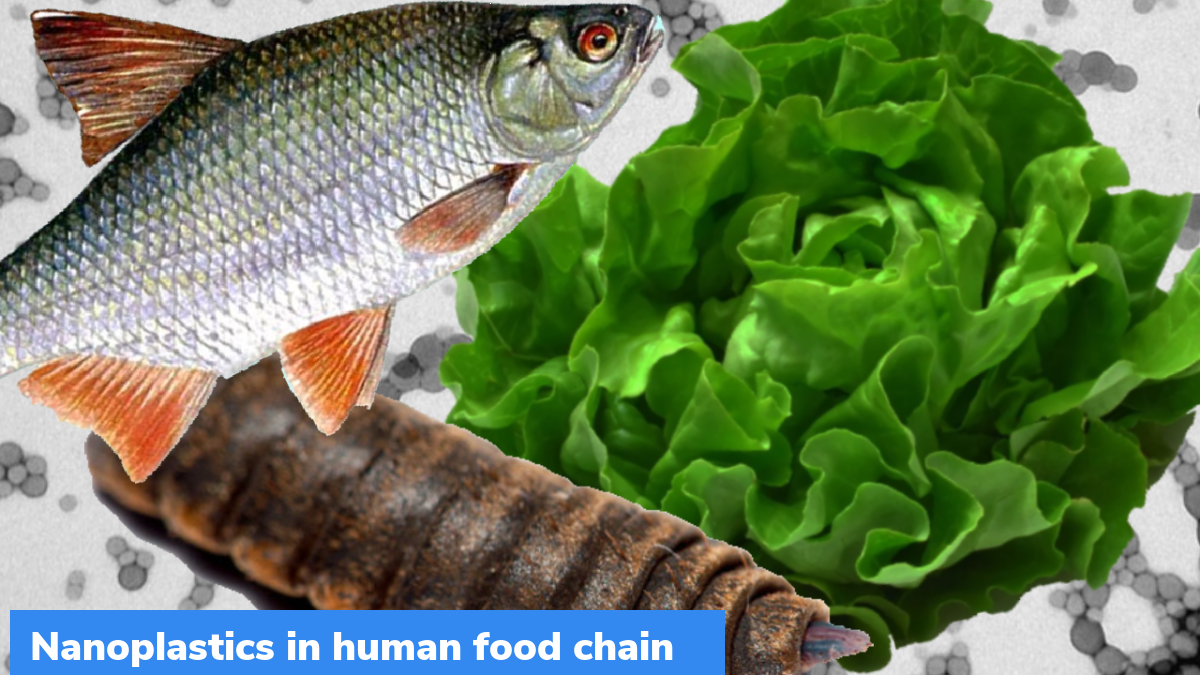Nanoplastics in human food chain
A new study published in the journal Nano Today revealed that nanoplastics travel up the human food web via plants, insects and fish.
Key facts
- Nonplastics are plastic debris particles that are smaller than 1,000 nanometre, which is equal to one billionth of a metre.
- Because of their miniscule size, nanoplastics are capable of passing through physiological barriers and enter different organisms through the food chain.
- These particles were detected and measured in organisms by researchers from the University of Eastern Finland.
- The researchers used a novel metallic fingerprint-based method to a model food chain that has three tropic levels.
- Tropic level is the position an organism occupies in the food chain.
- For this research, lettuce (primary producer), black soldier fly larvae (primary consumer) and an insectivorous fish (secondary consumer) were used.
- Researchers exposed lettuce plants to nanoplastics from commonly found plastic wastes in the environment – polystyrene and polyvinyl chloride nanoplastics – through contaminated soil.
- This lettuce was harvested and fed to black soldier fly larvae, which is used as a source of protein for children and cattle in many countries.
- The black soldier fly was then fed to the roach (fish), which is commonly found in fresh and brackish waters and sometimes consumed or used as a bait.
- From this experiment, researchers have found that nanoplastics from the contaminated soil have travelled from the lettuce plant to the fish.
- The nanoplastics stayed in mouth and gut of black soldier fly despite allowing it to empty it guts for 24 hours.
- This shows that nanoplastics pose significant health hazard to herbivores and humans by entering into their bodies and staying there.
- Currently, agricultural soil is receiving microplastics from various sources like atmospheric deposition, irrigation using wastewater, usage of sewage sludge for agricultural purposes, and use of mulching film.
Month: Current affairs - September, 2022
Category: Environment Current Affairs • Science & Technology Current Affairs


